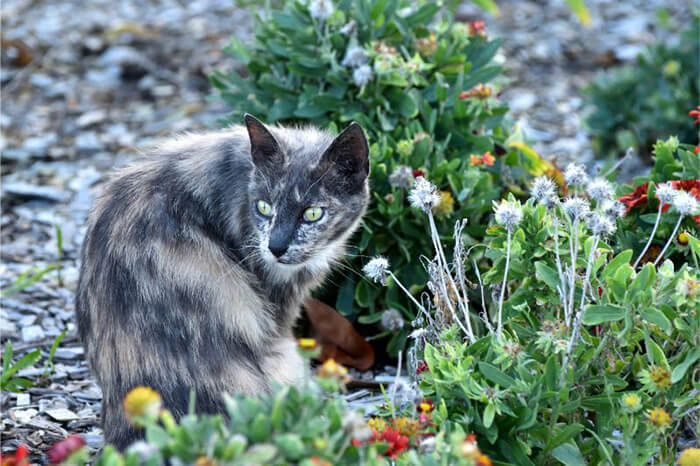

Regardless of how people feel about feral cats, the fact is, they are out there – and, in some places, numbers are abundant. The single most effective way to handle feral cat populations is to manage their numbers with the Trap, Neuter, Vaccinate, and Return (TNVR) method. This internationally accepted, humane approach not only controls the number of free-roaming and feral cats, it reduces the spread of disease and improves the lives of countless cats. This is just one element of cat colony care, but one that can have enormous impact on the surrounding community.
Feral Cat Caregivers
There are many ways people can help support the lives of feral cats, but for overall success TNVR must be the first step. Since most feral cats that enter shelters are eventually euthanized, TNVR saves lives and also curbs unnecessary spending on animal control. By trapping, sterilizing, and returning cats to their territories, the population will eventually decline.
Modifying Behavior
Cats that are spayed or neutered are not compelled to fight, roam, and mate. Behaviors often associated with wandering, territorial cats are replaced by more docile, less aggressive traits. As a result, police and animal control officers aren’t called as frequently when cat colony care is supported by property owners and neighbors. Additionally, public health threats are largely reduced when feral cats are vaccinated against contagious diseases.
Cat Colony Care
Once a person leaves out food for a stray, free-roaming, or feral cat, the cat view their location as a desirable place and stay. Proper management is a long term, year-round responsibility, with cats that become dependent on caregivers for the following:
- Off the ground food station with cover and open sides
- Water (keep in mind in winter water must be unfrozen, and certain accommodations must be made to prevent freezing)
- Sturdy, off the ground, and fully covered shelter
- Insulation (straw is known for being a great insulator for cold nights)
- Cleaning of feeding station and bedding
Also of importance is constant monitoring and record keeping. Cat colony care hinges on tracking numbers for TNVR. Note the appearance, gender, age, date of arrival, and when TNVR occurred.
New arrivals to the colony should be trapped and sterilized as soon as they appear. Tame adults and kittens older than 5 weeks old can be separated from the colony, socialized and prepared for possible adoption.
Lastly, cat colony care involves providing veterinary care for sick or injured cats.
Staying in Front
Without a proactive approach to a feral community of cats, relations with property owners and neighbors can become strained. We recommend that cat colony care include a daily ritual of cleaning out feeding stations and tidying up to reduce the presence of rodents, other wildlife, and bugs.
Our Stray Cat Program
We have our own stray cat program. From renting live release traps for secure and safe trapping of stray cats to performing affordable spays and neuters, Pets in Stitches is here to help. To further support cat colony care in Miamisburg, we offer vaccinations and ear tipping (really helpful for record keeping!).
Please contact us with any questions about the known benefits of spaying and neutering. Our team is always here for you.
